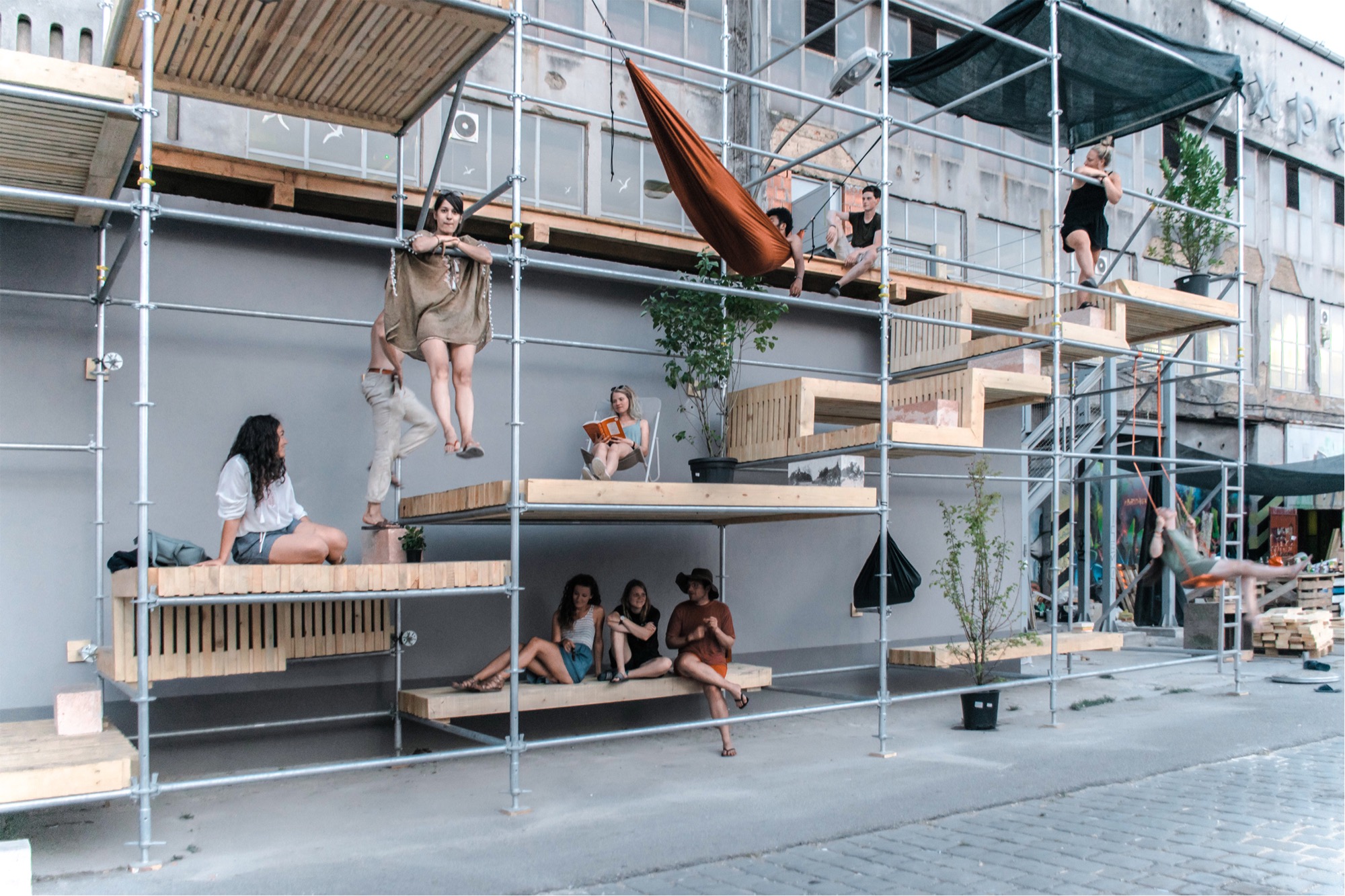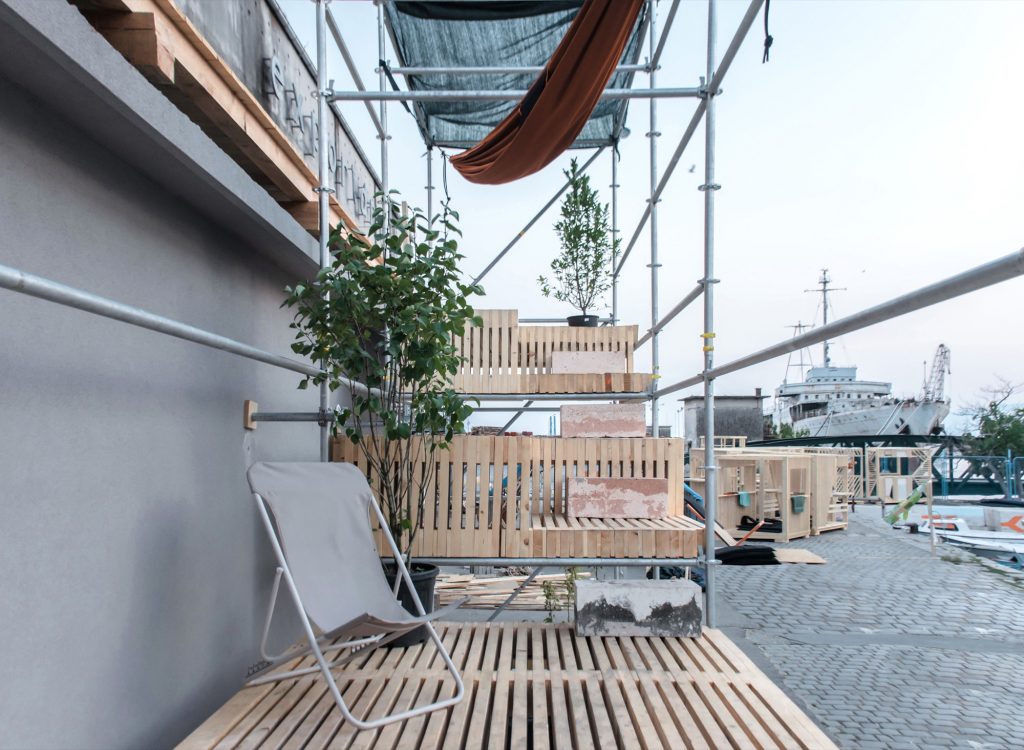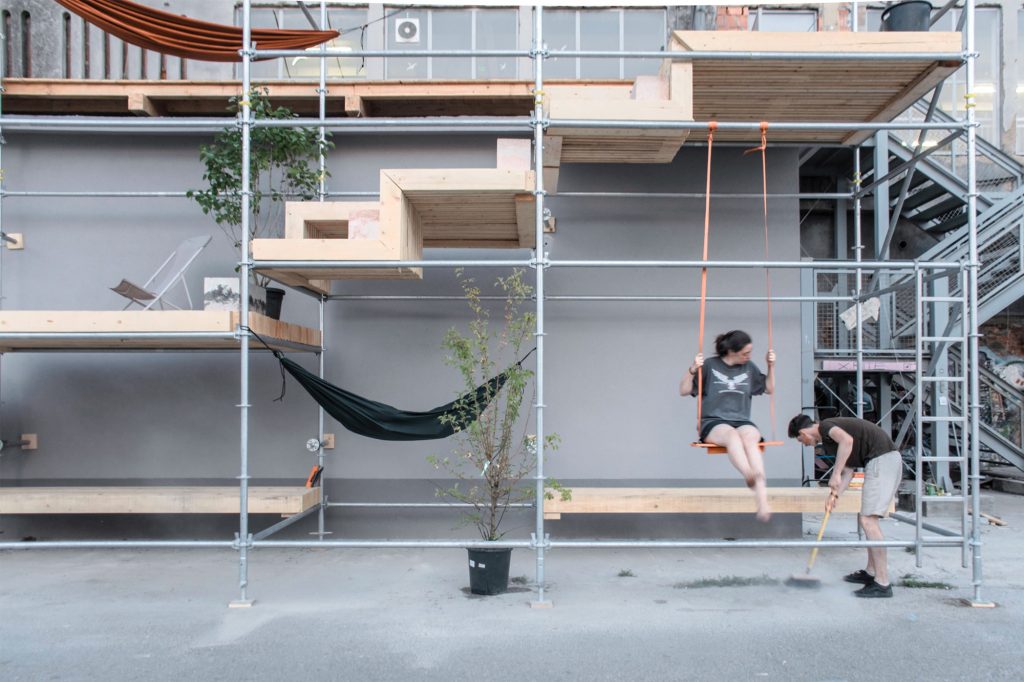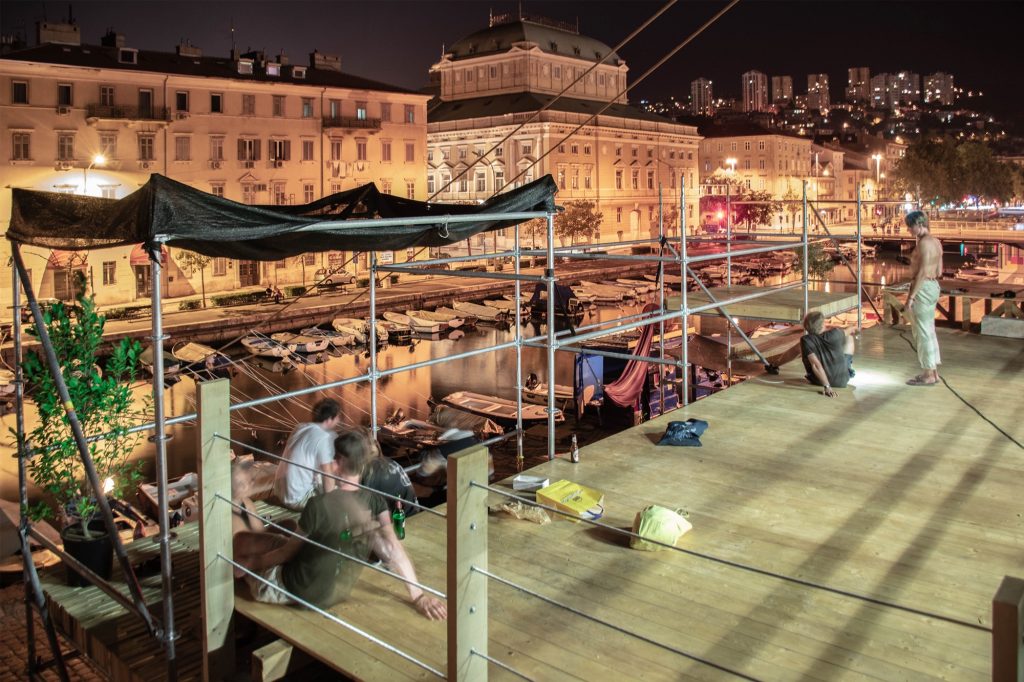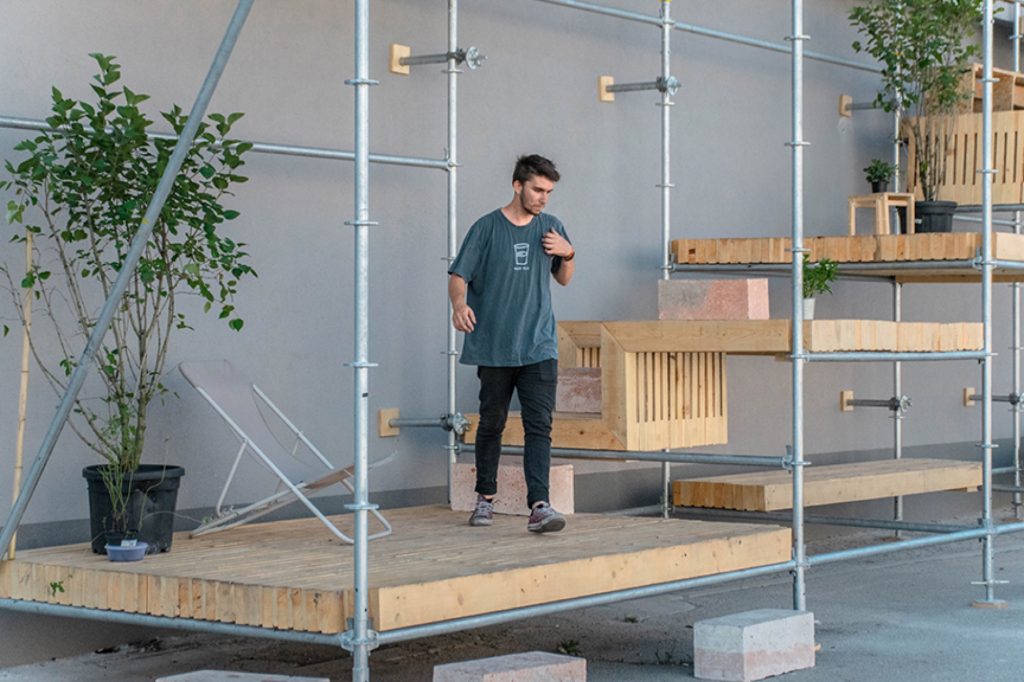Designers and Tutors :
Brett Mahon (Northern Ireland)
Joonas Parviainen (Finland)
Saagar Tulshan (India)
Shreyansh Sett (India)
Vanja Borovic (Croatia)

Level Up – a site-specific design & construction workshop held at the European Architecture Students’ Assembly, RE: EASA Croatia 2018 held in Rijeka, Croatia. The workshop set out to readapt a disused rooftop next to the Dead Canal in Rijeka’s Delta area, bringing it to life as a community meeting and event space for locals. During the event EASA sees the collaboration of over 500 students of Architecture and Design from all over europe and beyond, working to make a difference to the city where its being held. The event is formed of variety of workshops based around the philosophy of design, seminars and lectures by leading professionals and youthful thinkers.
The pavilion, built on an extension of a 50’s industrial storage building named Export Drvo, starts at the street and ascends upwards in a series of levels which progress to an elevated terrace built on top of the existing rooftop. Each level forms an intimate yet connective space for small groups to gather and at the same time provides a public frontage and awareness of the ongoing cultural regeneration of the Export Drvo building. This regeneration is coming in the form of adaptive reuse as a reaction to the disregard of industrial heritage in the city of Rijeka. A once thriving harbour port and nucleus of industry, the city today is populated by disused industrial building which have unlocked potential for the cities growth. A raised platform on the terrace provides for small gatherings to be addressed and a observation level steps up to allow users to gaze at the city beyond.

Level Up is a social space outside the Export Drvo, which is set to become an important venue when Rijeka becomes Europe’s culture capital 2020. From top of the pavilion opens up an exceptionally complex view, a 180 degree panorama varying from the mountains surrounding the city and chimneys of the old industrial district of Hartera to the 19th century theatre and market, the slow-flowing Dead canal with it’s small boats and Tito’s ship Galeb to the post industrial harbour and the open sea with misty mountains in the horizon.
Instead of creating new public urban area, Level Up puts focus on reclaiming existing space. It creates a balcony to the Delta with an industrial aesthetic, acting as a public frontage. In an era where permanence of the built form has been defining architecture, Level Up celebrates Ephemeral Urbanism, inviting everyone to ponder material and spatial impermanence. Is a recognition of the transitory nature of physical substances integral to the city growth process? Level Up is not just a construction idea but a pursuit of this philosophy
Photos by Rahul Palagani
Photos by Alexandra Kononchenko
Drawings
Site : Export Drvo Building, Rijeka, Croatia
Built up Area : 110 Sqm
Completion date : August 2018
Photographers:
RAHUL PALAGANI
ALEXANDRA KONONCHENKO
Facilitator : European Architecture Students’ Assembly (EASA) Croatia 2018// www.easacro.info
Materials Used : Steel Scaffolding structural frame (Doka), Solid construction wooden members, Decking wooden boards, Spax screws, Plants from Garden center, Viskoso (Rijeka)
Collaborating workshops at EASA Croatia 2018 : Masonry
Participants : Ana Mateos (Spain), Anna Opitz (Germany), Аnton Fedin (Russia), Ásta María Thorsteinsdóttir (Iceland), Ayşe Tuğçe Pınar (Turkey), Birgit Fløystad (Norway), Caro Andrade(Mexico), Ciaran Magee (Northern Ireland), Chloë Reyda (Belgium), Felic Micallef (Malta), Gleb Rudenya (Belarus), Glenn McNamara (Northern Ireland), Gustavs Grasis (Latvia), Ilia Bebi (Greece), Joanna Lewanska (Poland), Julia Triches (Brazil), Julien Hermant (Luxembourg), Klemen Mraz (Slovenia), Mattea Fenech (Malta), Samúel Aron Laufdal Guðlaugsson (Iceland), Sebastian Bidault (Mexico), Simona Svitkova (Slovakia), Tadhg Spain (Ireland)

